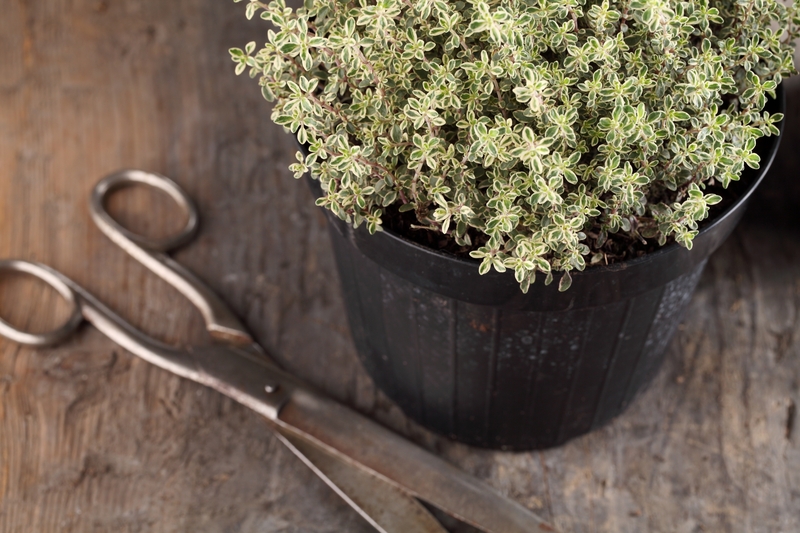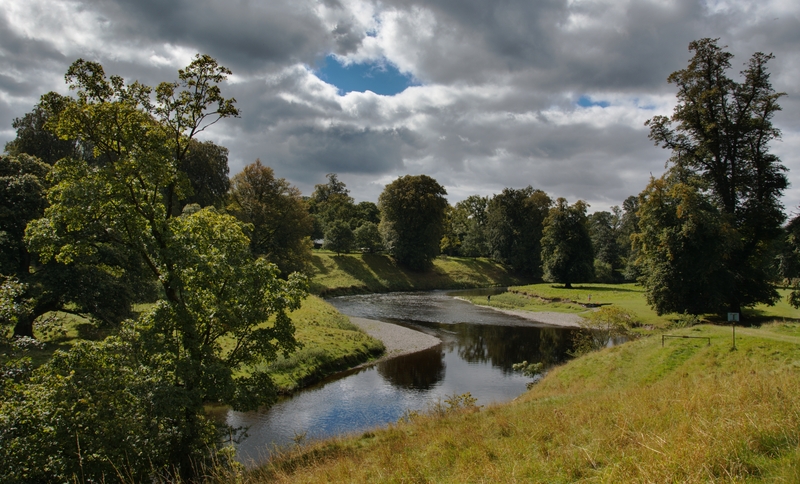Planning a Vibrant Play Garden Full of Discovery
Posted on 30/06/2025
Planning a Vibrant Play Garden Full of Discovery
Have you ever wondered how you can create an outdoor space that ignites the imagination, encourages physical activity, and fosters a love for nature? A vibrant play garden full of discovery is a modern answer for families, schools, and communities who want to give children a safe, stimulating, and educational environment right on their doorstep. In this comprehensive guide, we'll explore all you need to know about planning a dynamic play garden--from conceptualizing zones of exploration to selecting plants and materials that spark curiosity.
Why Design a Play Garden for Discovery?
A discovery play garden is more than a playground--it's a living, breathing landscape designed to engage all the senses. Unlike traditional playgrounds, which often rely on swings and slides, these gardens blend nature play with educational features to foster creativity, resilience, and a sense of wonder in children of all ages.
- Promotes Physical Fitness: Climbing, running, digging, and balancing foster healthy development.
- Encourages Curiosity: Hidden trails, sensory plants, and natural obstacles inspire exploration.
- Builds Social Skills: Shared spaces promote cooperation, problem-solving, and communication.
- Supports Emotional Wellness: Nature-rich environments reduce stress and support well-being.
- Teaches Stewardship: Children gain respect for the environment and learn about sustainability.
Building a vibrant play garden full of discovery provides a foundation for lifelong learning and healthy development in a rapidly changing world.

Essential Elements of a Vibrant Discovery Play Garden
Designing a discovery-rich play garden means combining functional, fun, and beautiful components. Consider these essential elements as you begin planning:
Sensory Plantings
- Colorful blooms: Attract pollinators and stimulate the sense of sight.
- Seed heads, grasses, and bamboos: Provide soothing rustling sounds and tactile experiences.
- Fragrant herbs and flowers: Add olfactory discovery with lavender, mint, rosemary, or honeysuckle.
- Edible plants: Strawberries, peas, and cherry tomatoes let kids taste the fruits of their labor while learning how food grows.
- Textured foliage: Lamb's ear, ferns, and succulents invite gentle touching and sensory investigation.
Natural Play Structures
- Logs, stumps, and boulders: For balancing, climbing, and imaginative play.
- Willow tunnels and living forts: Create secret hideaways and encourage cooperative building.
- Sand and water features: Offer opportunities for messy, hands-on learning through digging, pouring, and shaping.
- Tree swings and hammocks: Provide relaxing spots for daydreaming and unwinding.
Discovery Zones
- Pond or wetland area: Encourage wildlife watching, pond-dipping, and life cycle observation.
- Bug hotels and log piles: Attract beneficial insects for study and fascination.
- Chicken coop or rabbit hutch: Teach responsibility and animal care, if space and resources allow.
- Loose parts zone: Baskets of pine cones, sticks, shells, and stones inspire open-ended play and creativity.
Pathways and Adventure Trails
- Winding stepping stones: Guide movement, create visual interest, and support balance skills.
- Maze gardens or labyrinths: Provide quiet focus and a sense of accomplishment upon completion.
Site Planning and Safety Considerations
Before breaking ground on your vibrant play garden of discovery, effective site planning and design are vital. Here's how to start:
Site Analysis
- Sun exposure: Note areas of full sun, partial shade, and deep shade for optimal plant choices and comfort.
- Soil type and drainage: Test and amend as necessary to support a lush, functional garden.
- Existing vegetation and features: Retain mature trees, natural slopes, and rocks for instant character and ecological value.
- Accessibility: Ensure safe, step-free routes for children of all abilities. Paths should be wide enough for wheelchairs or strollers.
Safety Practices
- Choose non-toxic, child-safe plants: Avoid plants with thorns, sharp leaves, or toxic berries.
- Provide clear sight lines: Arrange features so that adults can easily supervise children at play.
- Use soft, impact-absorbing surfaces: Mulch, wood chips, or rubber mats under climbing structures minimize the risk of injury.
- Install fencing and gates as needed: Define boundaries to keep children safe within the play area, especially near roads or water.
- Inspect and maintain regularly: Check for loose parts, splinters, and worn equipment to ensure ongoing safety.
Never sacrifice safety for excitement--but don't underestimate a child's need for challenge and adventure in the garden!
Step-by-Step Guide to Designing Your Discovery Play Garden
Ready to get started on planning your vibrant discovery play garden? Here's a logical sequence to guide your process:
1. Define the Garden's Mission & Users
- Is your play garden for a family backyard, schoolyard, or community space?
- What are the age ranges and special needs of the children?
- Do you want to prioritize nature play, physical fitness, science learning, or a blend?
- How much time and resources can you dedicate to garden maintenance?
2. Create a Concept Plan
- Draw a rough sketch of your space.
- Mark zones for action and quiet play, sensory exploration, and parent seating.
- Consider connecting themed areas with curving paths for visual flow.
3. Select Plants and Features Thoughtfully
- Mix native plants for habitat value and easy care with well-loved, child-friendly varieties.
- Choose robust materials--hardwood, stone, and strong rope withstand rough play.
4. Build and Plant in Stages
- If budget is a concern, prioritize safety and core features in the first season.
- Add new zones, plantings, and features over time as resources allow.
5. Involve Children in Creation
- Let kids help design signage, plant seeds, or decorate stepping stones.
- Children are more likely to value and care for a garden they helped build.
Choosing Plants for a Lively Discovery Garden
Plant selection is a cornerstone of crafting a vibrant play garden full of discovery. Choose plants that offer year-round interest, resilience, and sensory appeal:
- Spring: Bulbs like crocus and daffodils for early color.
- Summer: Pollinator favorites such as sunflowers, zinnias, and coneflowers.
- Autumn: Ornamental grasses, pumpkins, and colorful foliage.
- Winter: Evergreens, holly, and shrubs with interesting bark for winter beauty.
Don't forget fruit bushes, climbing peas, and berry canes for edible exploration!
Innovative Features to Spark Discovery
Maximize curiosity in your vibrant play garden for discovery by including novel and interactive features:
- Music Panels: Attach chimes, drums, or xylophones made of weather-proof materials along a fence.
- Outdoor Art Wall: Provide a chalkboard, easel, or space for mural painting for creative expression.
- Rainwater Play: Install rain chains, barrels, or water tables for hands-on science lessons.
- Sunflower Houses: Plant tall sunflowers in a ring to create a seasonal hideaway for storytelling and play.
- Story Circles: Gather natural seating--logs, stumps, or stones--around a central space for reading or performances.
- Maze or Puzzle Gardens: Lay out winding paths or low hedges to encourage problem-solving and spatial awareness.
Maximizing Learning in the Discovery Play Garden
Planning a play garden full of discovery is the perfect opportunity to connect play with meaningful learning experiences. Try these strategies:
- Interpretive Signs: Label plants or set up activity prompts (e.g., "Find three different kinds of leaves!").
- Seasonal Garden Journals: Encourage kids to record plant growth, animal sightings, or weather patterns.
- Themed Weeks: Focus each week on a new topic--Bug Hunt Week, Weather Watching, Garden Art, etc.
- Workshops and Storytimes: Invite local gardeners, artists, or naturalists to lead sessions.
- Recycled and Upcycled Projects: Transform old tires into planters or build a play kitchen with salvaged materials.
Maintaining a Thriving Play Garden of Discovery
Active play and discovery gardens require more hands-on care than standard lawns, but the payoff is worth the effort. Here are maintenance tips to help your garden thrive:
- Regularly check equipment and pathways for safety.
- Plan for weekly weeding and watering, especially during dry spells.
- Mulch beds to retain moisture and minimize weeds.
- Host seasonal clean-up days to involve families or the community.
- Encourage children to help with planting and harvesting to foster ownership.
Remember: a play garden's magic lies in its ever-changing, slightly wild quality--embrace a few weeds, fallen logs, and pockets of dense planting for a truly enriching environment.
Design Ideas and Themes for a Memorable Discovery Play Space
Personalize your vibrant play garden full of discovery with a creative theme:
- Woodland Forest: Mossy logs, tree swings, den-building corners, and fairy houses nestled among shade plants.
- Butterfly Haven: Bright nectar-rich flowers, a puddling area, and caterpillar food plants.
- Pirate Cove: Rope bridges, a "shipwreck," treasure hunts, and sand play zones.
- Edible Jungle: Vertical gardens, tunnel trellises, fruit trees, and harvesting baskets.
- Pollinator Paradise: Bee hotels, wildflower meadows, insect observation stations.
Inspire children with magical names for key areas: "Secret Willow Tunnel," "Sunflower Hideout," or "Bug Detective Station."

Common Challenges and Solutions in Discovery Play Garden Planning
- Limited space? Use raised beds, hanging baskets, or multi-level platforms for vertical play and planting.
- Small budget? Upcycle natural or found materials--logs, rocks, pallets, tires--for affordable features.
- Pests and wildlife? Net sensitive plants, use native species adapted to local conditions, and embrace natural cycles where possible.
- Maintenance overwhelm? Start small, cultivate easy-care perennial beds, and get children and families involved in upkeep.
Final Thoughts: Begin Your Vibrant Discovery Play Garden Today!
With thoughtful design and creativity, planning a vibrant play garden full of discovery can transform any outdoor space into a joyful, sensory-filled, ever-evolving wonderland. Whether for your home, school, or community, the benefits for children--and the natural world--are immeasurable. So sketch your dreams, gather your supplies, and let the adventure begin!
Happy gardening--and may your play space always be full of color, laughter, and discovery!

